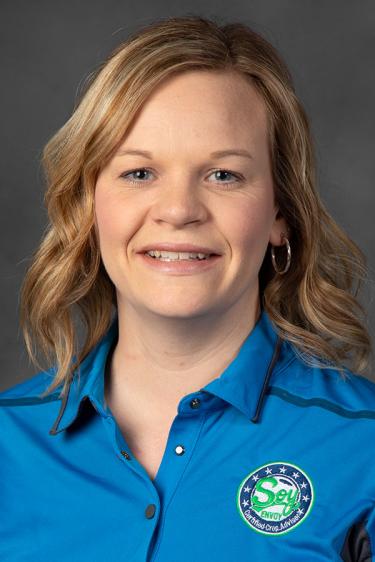ILSOYADVISOR POST
Postemergence Herbicide Recommendations in Soybeans
Getting your crops planted this year was likely the biggest challenge you’ve faced thus far. The second biggest challenge may be how to maintain good weed control, especially when it comes to waterhemp. Waterhemp has been the most troublesome weed for soybean farmers for the last 10 years. Since that time, no new postemergence (POST) herbicide modes-of-action (MOA) have been developed. We have, however, seen the development of new soybeans with herbicide-resistant traits. Although these new soybeans have made controlling waterhemp easier it’s important to know how to utilize them properly for good weed management.
Glufosinate. Glufosinate is a contact herbicide, meaning it will only kill what it touches. Because of this, it is extremely important to apply it correctly for coverage. If soybeans get too big, they can intercept the spray, preventing it from killing the intended weed. Target early applications to ensure weeds are small. Even small waterhemp, however, can be more difficult to control than other broadleaf weeds because of its multiple growing points. Use at least 20 gallons per acre (GPA) spray volumes and spray tips that provide medium to coarse size droplets. The addition of AMS (ammonium sulfate) is also required to obtain good herbicide efficacy. Glufosinate provides adequate control of broadleaf weeds, but typically requires an additional herbicide for grass control. If any of the above recommendations are not followed proper waterhemp control may not be achieved.
Dicamba. Dicamba came to market in the 2017 season and has had been both loved and hated by growers. It is a systemic herbicide, meaning it will move once inside the plant and provides excellent control of all broadleaf weeds, including waterhemp. The spray requirements for dicamba applications are quite lengthy. Spray volumes of 15 GPA are recommended as is a tip that provides a very coarse or extremely coarse droplet size. AMS is prohibited due to its ability to increase volatility. Applications are restricted to within 45 days after planting or July 15, whichever comes first. Although the new formulations provide lower volatility than previous ones, off-target movement to non-dicamba traited soybeans has been observed if all label requirements are not followed. If you are spraying dicamba, I encourage you to read the label and abide by it to ensure it remains an option in the future.
2,4-D. 2019 will be the first year 2,4-D will be available to use on commercial soybean acres. It has the same MOA as dicamba. However, the 2 herbicides aren’t interchangeable, meaning you cannot spray dicamba-tolerant soybeans with 2,4-D and you cannot spray 2,4-D-tolerant soybeans with dicamba. The 2,4-D herbicide is systemic and provides control of all broadleaf weeds, including waterhemp. Currently, the spray requirements for 2,4-D are not as lengthy as dicamba. Spray volumes of 10-15 GPA and spray tips providing very coarse or extremely coarse droplets are recommended. As with dicamba, AMS is prohibited. Although the application window for 2,4-D is longer I would still recommend making early applications and targeting small weeds. Because spraying 2,4-D in soybeans is a new practice I would advise taking extra precautions to prevent off-target movement to other plant species.
No waterhemp discussion would be complete without mentioning the most effective way to control it is with soil-residual herbicides. There are several products available that contain PPO inhibitors and long chain fatty acid inhibitors, which are both highly effective when applied as soil-residual herbicides. I recommend including these products in your preemergence herbicide application and your POST application to provide the highest level of waterhemp control.





Comments
Add new comment